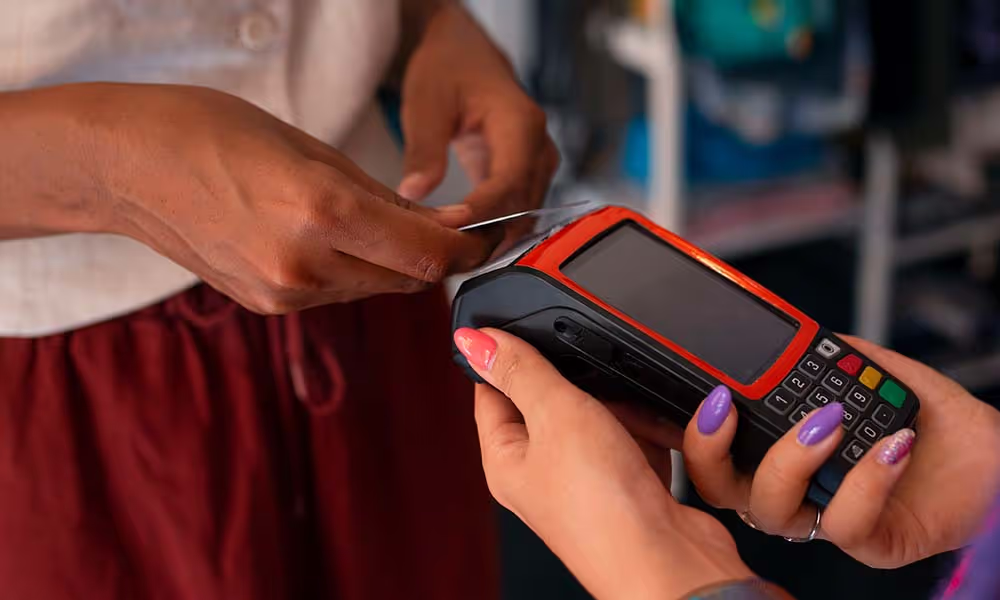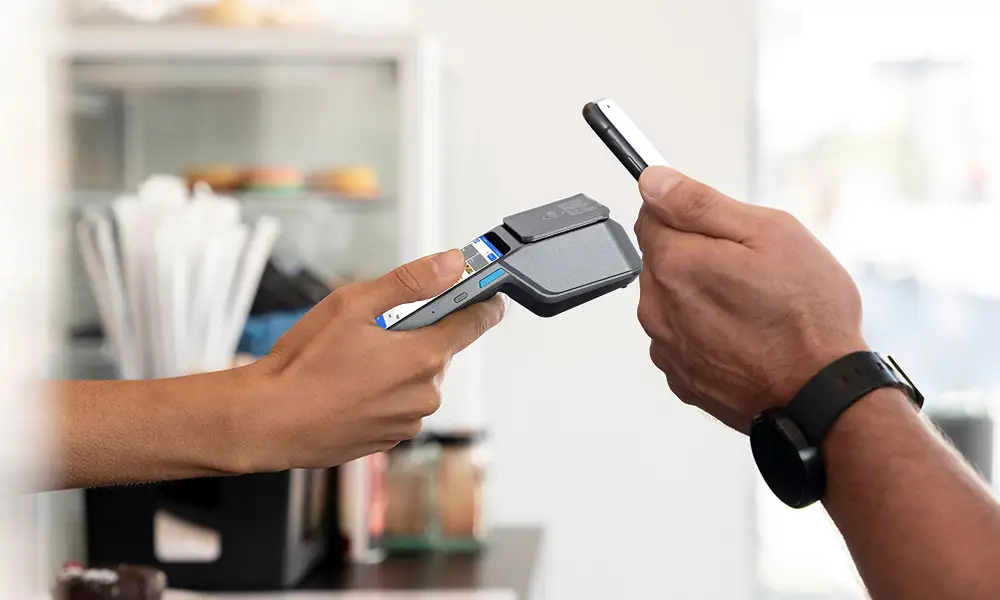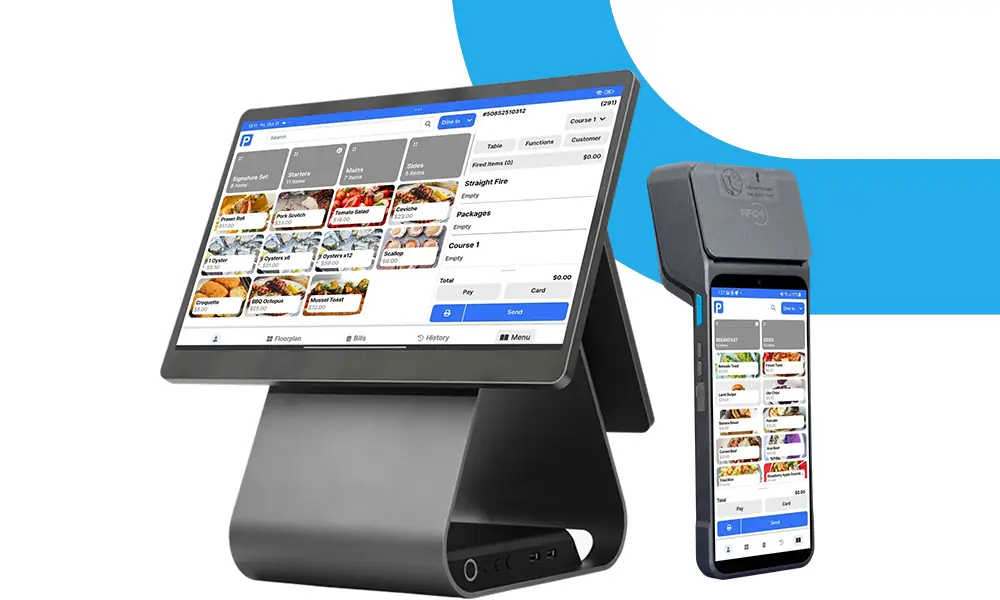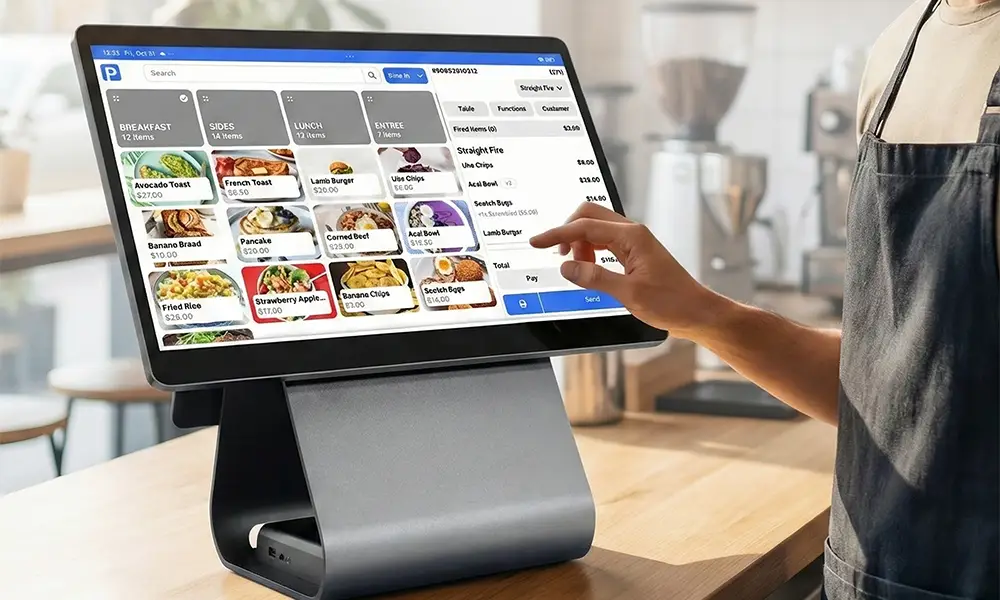In retail and hospitality, a smooth checkout process can make or break the customer experience. Ever noticed how long queues or a clunky payment terminal can leave customers feeling frustrated—or worse, drive them away? Payment delays aren’t just an inconvenience; they’re a lost opportunity.
This is where embedded payments come into play. By streamlining transactions directly into your point-of-sale (POS) system, embedded payments offer a seamless, flexible solution that’s perfect for the fast-paced nature of retail and hospitality. Ready to understand how these systems can revolutionise your business?
What Are Embedded Payments?
Embedded payments integrate payment processing directly into the business’s POS system, web platform, or app. Instead of bouncing between separate terminals or payment providers, transactions happen directly within the system, making it seamless for both customers and staff.
Embedded payments are more than just a convenience; they help businesses handle payments with ease, speed, and security—all in one place. For retailers, restaurants, hotels, and cafes, this can transform customer experience and simplify operations.
Why Embedded Payments Matter for Retail and Hospitality
For businesses where every second counts, embedded payments provide a range of advantages that go beyond just speeding up the checkout process.
Key Benefits of Embedded Payments
- Improved Customer Experience: Customers want fast, hassle-free checkouts. Embedded payments make it possible by allowing payments to happen in seconds without leaving the POS or app. The quicker the transaction, the happier the customer.
- Increased Efficiency: For staff, handling payments within the same system used for orders or reservations reduces time spent juggling multiple devices. This boosts efficiency, especially during peak times, and allows staff to focus more on service.
- Enhanced Security: Embedded payment solutions are generally built with advanced security protocols that comply with the highest industry standards, including end-to-end encryption. This helps protect customer data and reduces the risk of fraud.
- Data-Driven Insights: By tracking transactions within a single system, embedded payments provide valuable data on customer behaviour, purchase trends, and sales patterns. This information can be used to refine marketing strategies, optimise stock, and improve customer service.
- Flexible Payment Options: Embedded payment systems support multiple payment methods, from cards to digital wallets. Offering customers their preferred payment option can enhance satisfaction and make transactions feel more personalised.
Embedded payments allow retail and hospitality businesses to operate more smoothly, reduce errors, and provide a better overall experience—key advantages in competitive industries.
The Key Features of Embedded Payment Systems
Embedded payment systems have various features that make them ideal for high-traffic businesses like retail stores, cafes, and hotels.
Here’s a rundown of the most important ones to look out for:
1. Integrated POS and Payment Processing
Having your POS and payment processing combined in one system is the primary benefit of embedded payments. Staff no longer have to switch between devices, reducing the risk of errors and speeding up transactions.
2. Omnichannel Capabilities
Embedded payment systems with omnichannel support can process payments across multiple platforms—whether in-store, online, or through an app. This is particularly beneficial for businesses that operate both physical and online stores.
3. Real-Time Reporting and Analytics
Access to real-time sales data allows managers to monitor sales trends, evaluate peak times, and make data-driven decisions. This reporting is a powerful tool for adjusting inventory or even staffing needs based on accurate data.
4. Multi-Payment Support
Today’s customers expect flexibility in how they pay. Embedded payment systems often support credit cards, debit cards, digital wallets, and sometimes even alternative payment options like buy-now-pay-later (BNPL) solutions.
5. Secure Payment Processing
With built-in compliance for Payment Card Industry (PCI) standards and end-to-end encryption, embedded payment solutions offer robust security measures, giving customers peace of mind about their data security.
How Embedded Payments Benefit Different Types of Businesses
The advantages of embedded payments can be seen across the retail and hospitality sectors, from small cafes to large retail chains. Here’s how they make an impact in various business environments.
Embedded Payments in Retail
Retailers, especially high-volume stores, benefit greatly from the efficiency and flexibility of embedded payments. Here’s why:
- Reduced Queue Times: Faster transactions mean shorter lines and happier customers.
- Centralised Data: Embedded systems store all sales data in one place, helping retailers manage stock, track popular items, and make informed purchasing decisions.
- Loyalty Programs Integration: Many embedded payment systems can connect with loyalty programs, making it easy for customers to collect points or redeem rewards during checkout.
Embedded Payments in Hospitality
In the hospitality industry, every second of customer service counts. For restaurants, hotels, and cafes, embedded payments offer:
- Tableside Payments: Staff can process payments directly at the table, eliminating the need for customers to stand up and queue to pay.
- Booking and Reservation Management: For hotels, embedded payments make it simple to manage deposits, final payments, and even on-premise purchases within one system.
- Improved Guest Experience: Simplified payments allow customers to enjoy their experience without interruptions, enhancing their overall satisfaction.
Embedded Payments for E-Commerce and Mobile
Embedded payment systems are also ideal for businesses with a strong online presence. For e-commerce and mobile apps:
- Seamless Checkout: Embedded payments reduce steps in the checkout process, lowering cart abandonment rates.
- Recurring Payments: Embedded systems make it easy to set up recurring billing for subscriptions or memberships.
- Enhanced Customer Data: Track online purchases, popular items, and seasonal trends in one platform, making it easier to tailor marketing efforts.
How to Choose the Right Embedded Payment Solution
When selecting an embedded payment system, consider the unique needs of your business and the features that will deliver the most value.
- Consider Your Business Model: Look for a solution that aligns with your business type. Retail stores may need strong inventory management, while a cafe might prioritise tableside payments.
- Evaluate Payment Flexibility: Ensure the solution supports multiple payment options, including cards, mobile wallets, and possibly BNPL options.
- Check Security Standards: Make sure the provider complies with PCI standards and has strong data encryption to protect sensitive customer information.
- Look for Integration Capabilities: Does the system integrate easily with your POS, inventory management, or e-commerce platform? Integration will streamline operations and improve efficiency.
- Prioritise User-Friendly Interfaces: The best systems are easy to navigate and don’t require extensive training. A user-friendly interface helps staff get up to speed quickly and minimises disruptions to service.
Take Your Business to the Next Level with Embedded Payments!
Embedded payments aren’t just a trend—they’re a powerful tool for improving customer experience, increasing efficiency, and simplifying operations. By integrating payments directly into your POS or app, you create a seamless and secure experience that customers will appreciate. Whether you’re in retail, hospitality, or e-commerce, an embedded payment system can give you the flexibility to meet today’s customer expectations with ease.
Ready to see how embedded payments can enhance your business? Book a demo with Payflo and explore the possibilities of bringing flexibility and efficiency to your payment process.
FAQs about Embedded Payments
1. How are embedded payments different from regular POS payments?
Embedded payments integrate directly with your POS or app, making transactions seamless and eliminating the need for separate terminals or payment providers.
2. Are embedded payments secure?
Yes, most embedded payment systems are PCI-compliant and use end-to-end encryption to protect customer data.
3. Can embedded payments work offline?
Some systems offer offline capabilities, allowing you to process payments even during internet outages, with transactions synced once the connection is restored.
4. Do embedded payment systems support mobile wallets?
Many embedded payment systems support mobile wallets like Apple Pay and Google Pay, offering customers flexibility at checkout.
5. Is an embedded payment solution worth the investment?
For businesses aiming to improve customer experience, reduce checkout times, and gain valuable data insights, embedded payments are absolutely worth the investment.


%201.svg)
%201.svg)





.png)
.png)
